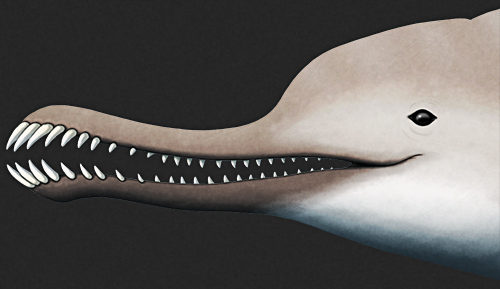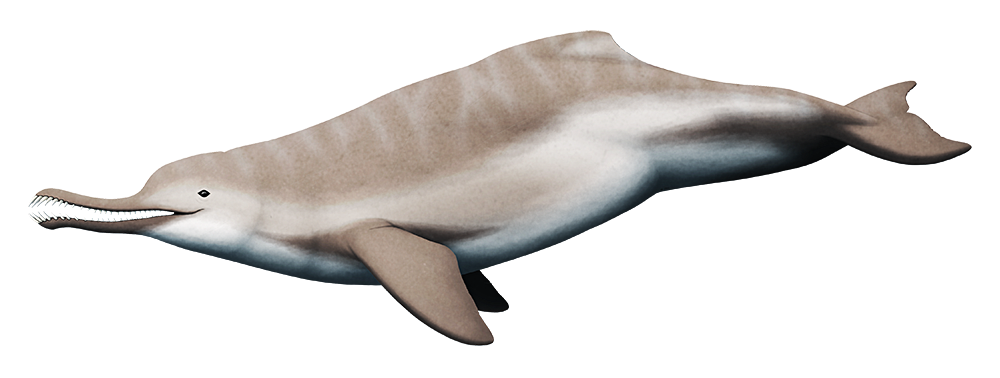The two living subspecies of the South Asian river dolphin are the last surviving members of a lineage known as the Platanistoidea, an early evolutionary branch of the toothed whales. This group was once much more diverse and widespread than their modern representatives, found in oceanic habitats around the world from the Oligocene to the mid-Miocene.
Many of them had forward-pointing protruding teeth at the tips of their snouts, resembling those of some plesiosaurs or pterosaurs, suggesting they were a convergent adaptation used for snagging hold of slippery soft-bodied aquatic prey.
Furcacetus flexirostrum is one the newest additions to this group, named and described in late March 2020. It lived in Pacific coastal waters around Peru during the early Miocene, about 19-18 million years ago, and was about the same size as modern South Asian river dolphins at around 2.3m long (7’7″).
And it had a uniquely-shaped snout for a cetacean, curving upwards for most of its length but then turning downwards right at the tip, which along with large forward-pointing teeth gave its jaws a vaguely crocodilian appearance.

Much like slender-snouted crocodilians and spinosaurids, this arrangement would have allowed Furcacetus to make quick bites at small-fast-moving prey like fish and crustaceans.

